9 Steps to Improve Your Dog's Alone Time
When you leave the house, do you ever worry about your dog feeling lonely or anxious? Many dog owners do. It’s important to make sure that your dog feels happy and safe when they’re home alone. This guide will help you learn how to make alone time easier and more enjoyable for your dog. By following a few simple steps, you can help your furry friend feel calm and comfortable, even when you’re not there. Let’s find out how you can improve your dog’s experience during alone time.
Understanding Dog Anxiety
Dogs can feel anxious, just like people do, especially when they’re left alone. When dogs are anxious, they might bark a lot, chew on furniture, or even have accidents inside the house. These are ways they show that they’re not feeling happy. It’s important for us to notice these signs so we can help them feel better. Just knowing what makes your dog feel scared or nervous is a big first step in helping them.
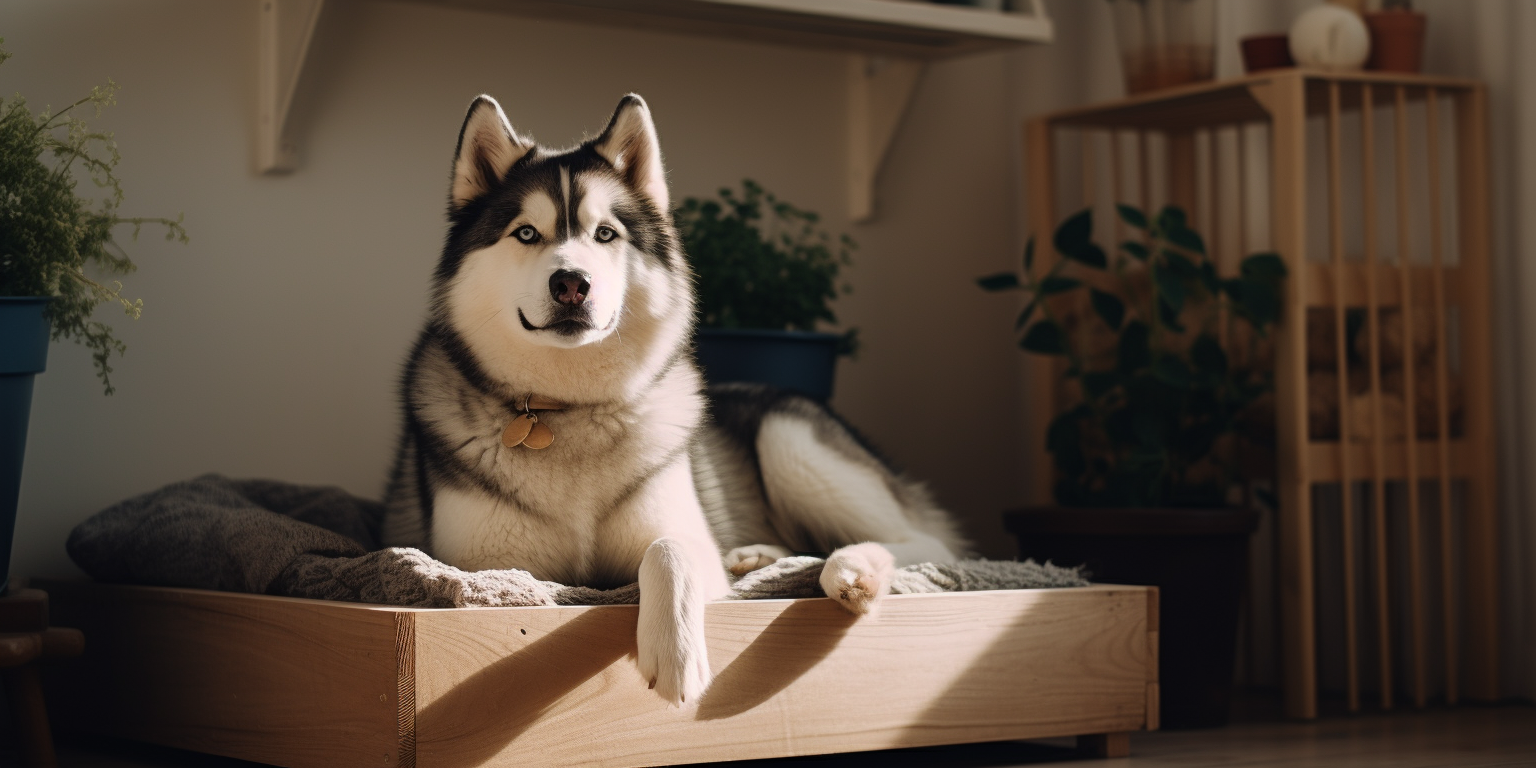
Creating a Safe Space
Every dog needs a special spot in the house where they feel completely safe and comfortable. This could be a cozy crate, a quiet room, or a corner with their favorite bed. Make this place nice for your dog by putting things there that smell like you, like an old T-shirt. This smell will remind them of you and help them feel calm. This space should also have some of their favorite toys and a comfy blanket. When you have to go out and leave your dog at home, this safe space is where they can go to feel secure and relaxed until you come back.
Routine is Key
- Set a Schedule: Dogs like knowing what happens next. Set times for eating, walking, and sleeping every day.
- Morning Routine: Feed your dog and take them for a walk every morning at the same time.
- Leaving Home: Try to leave the house at the same time each day so your dog learns when you’ll go and that you’ll come back.
- Evening Routine: When you return, give them dinner and some playtime at the same time each evening.
- Consistent Alone Time: Have your dog get used to being alone at the same part of the day. This helps them feel calm during these times.
- Bedtime: End the day with a bedtime routine like a final bathroom break and then bedtime in the same spot each night.
Following these points helps your dog feel safe and secure because they know what to expect each day.
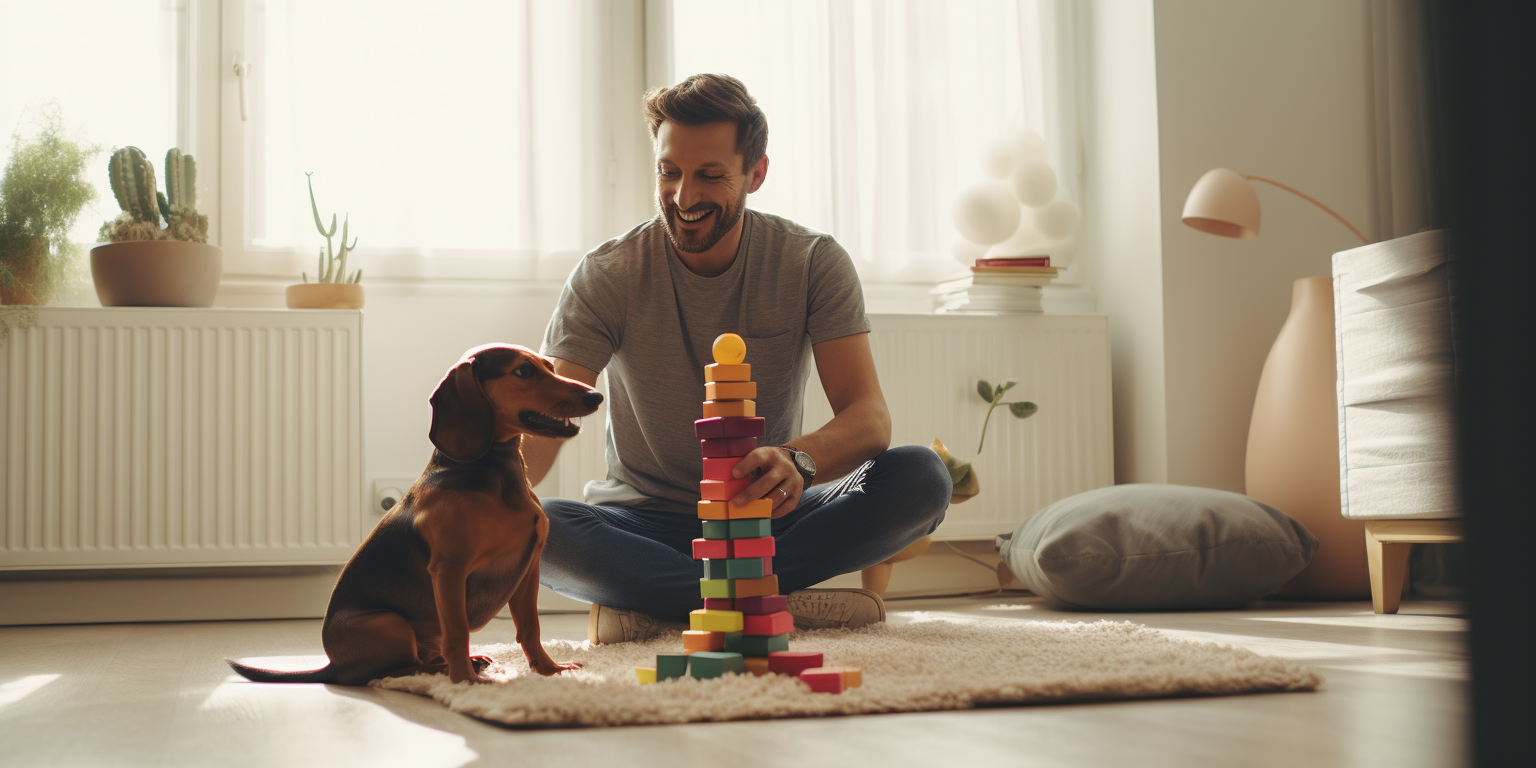
Physical Exercise
Getting enough exercise is very important for your dog, especially before they spend time alone. Exercise helps your dog burn off extra energy and makes them tired, so they are more likely to rest calmly when you’re not there. Think of how you feel after a lot of playtime; you probably want to relax or take a nap, and it’s the same for dogs.
Before you leave for work or need to be away, take your dog for a walk or play a game of fetch. Running around and playing helps use up the energy that might otherwise make them anxious or lead to naughty behavior like chewing shoes or furniture. Also, the fun time spent with you builds a stronger bond and makes your dog feel loved and secure.
If you know you will be gone for a long time, try to make sure your dog gets a good, long play session. This could be throwing a ball in the park, jogging together, or anything else that gets your dog moving. After lots of play, your dog will be more interested in resting, and the time alone won’t seem so long or hard for them. This way, exercise not only keeps your dog healthy but also happy and calm when they’re on their own.
Mental Stimulation
Keeping your dog’s mind active is very important, especially when they spend a lot of time alone. Just like kids love playing games that make them think, dogs also enjoy activities that challenge their brains. This helps them stay happy and prevents them from getting bored or feeling lonely.
Below are several methods to offer mental stimulation for your dog:
- Puzzle Toys: These are special toys that make your dog solve a little problem to get a treat. For example, they might have to move pieces around or push levers.
- Hide and Seek: Hide treats throughout the house for your dog to discover. This not only gives them a fun activity but also keeps them moving and thinking.
- New Tricks: Teaching your dog new tricks is a great way to keep their mind sharp. Spend some time each day on simple training sessions.
- Rotating Toys: Dogs can get bored with the same toys, so try to change their toys regularly. This keeps their playtime fun and interesting.
- Interactive Feeding: Use feeding toys that require your dog to work for their food. This can be as simple as a ball that dispenses food as they roll it around.
By providing these kinds of mentally stimulating activities, you can help keep your dog’s mind engaged and active. This is especially important when they have to be alone for a while. Keeping their brain busy can make the time pass faster for them and can reduce feelings of loneliness or anxiety.
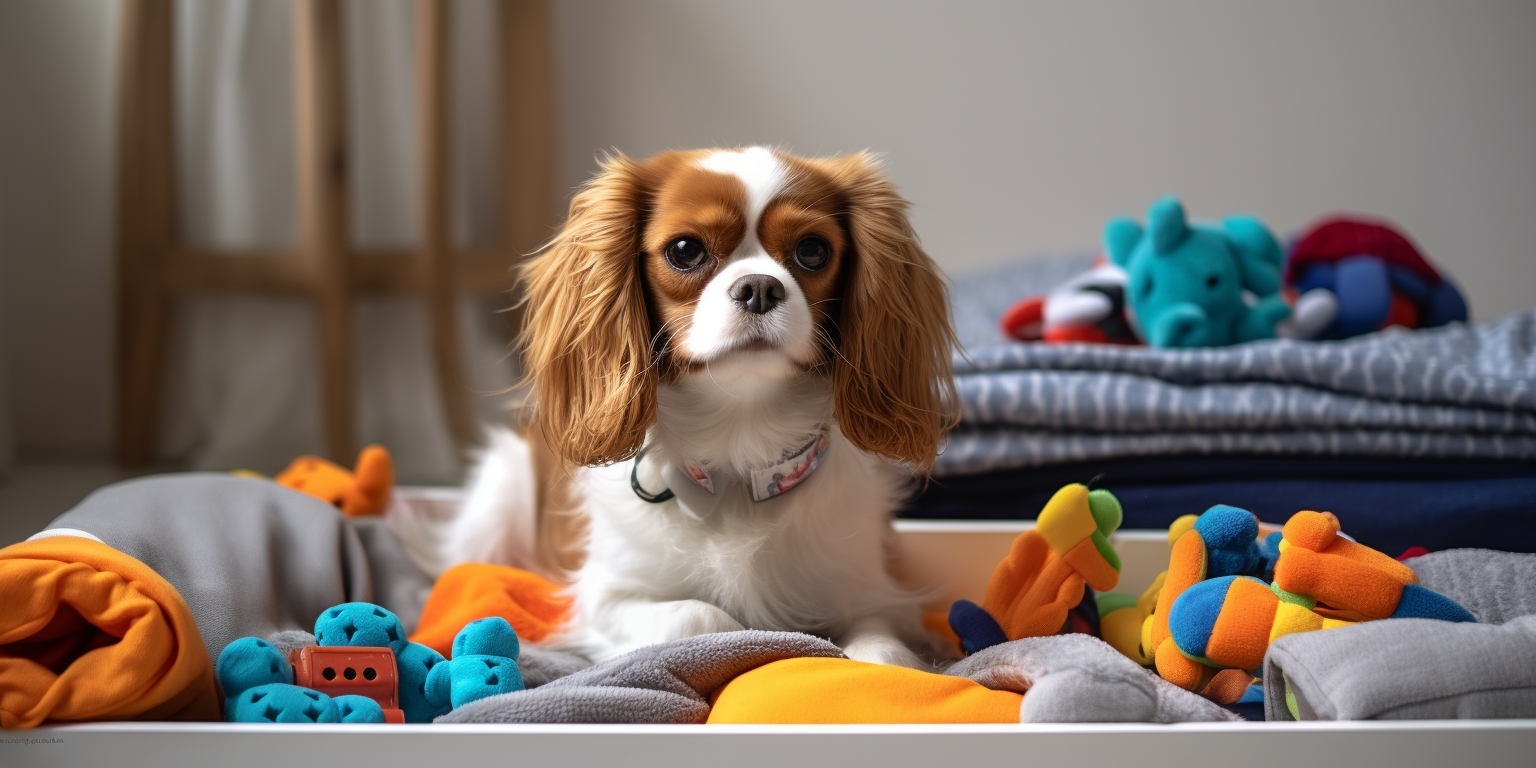
Comfort Items
Comfort items can make a huge difference in how secure your dog feels when you’re not around. These are things like an old T-shirt of yours, a favorite blanket, or a special toy that they love. The scent of your clothes can be very soothing to your dog because it reminds them of you. Just like a child might have a favorite blanket or stuffed animal, dogs can also find comfort in familiar smells and objects.
Make sure these items are accessible in the place where your dog spends their alone time. Having these comforting things can help reduce their stress and make them feel less lonely. It’s akin to having a part of yourself present with them. Additionally, you can leave a soft, warm bed or a chew toy that they like to spend time with. These items offer not just comfort but also a sense of security and home.
Comfort items are key to helping your dog feel better when they’re alone. They address different needs: keeping their mind sharp and making their environment feel safe and loving. This strategy can greatly improve your dog’s experience of alone time, making them happier and more relaxed until you return.
Gradual Departures
Gradual departures are a gentle way to help your dog get used to being alone without feeling scared or upset. This method is especially important if your dog gets very anxious when you leave. It teaches them that being alone is okay and that you will always come back.
Start by incrementally extending the duration your dog spends by itself, initially beginning with short periods of just a few minutes. You can step outside the door and then come back in quickly. Your dog will learn that when you leave, it’s not scary because you return very soon. Gradually, make the time you are away a little longer. Maybe next time, stay outside for five minutes, then ten minutes, and so on.
As you increase the time you’re away, your dog starts to feel more comfortable being alone. They understand that even if you are gone for a while, you will always come back. This can really help reduce their worry.
Remember to be patient with this process. It might take some time for your dog to feel completely okay when you’re not there. Just like when learning anything new, going slow and steady makes it easier for your dog to get used to being alone.
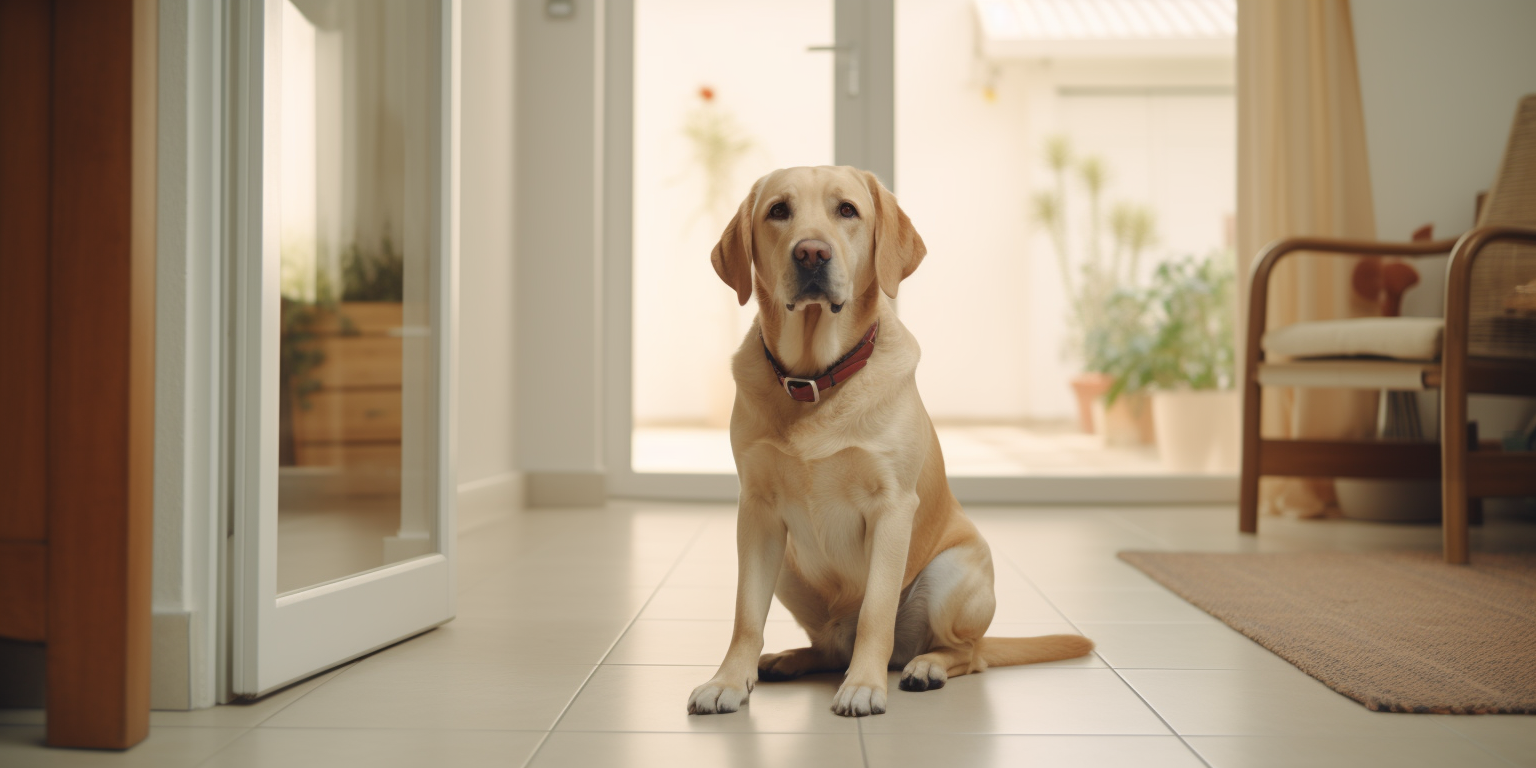
Monitoring and Adjustments
It’s very important to watch how your dog acts when they are alone to make sure they are happy and not too stressed. By keeping an eye on them, you can see if the things you are doing are helping or if you need to try something different.
Here are some steps to help you monitor your dog and make necessary adjustments:
- Use a Camera: Set up a camera where your dog spends most of their alone time. This lets you watch them from your phone or computer when you’re not home.
- Watch for Signs of Stress: Look for signs like too much barking, pacing around, or chewing on things they shouldn’t. These can all be signs your dog is not happy.
- Make Changes Based on What You See: If you notice your dog is bored or anxious, try adding more toys or changing their environment to make it more comfortable.
- Adjust Their Schedule: Sometimes, changing the times you leave or how long you are gone can help. If your dog does better with shorter alone times, adjust your schedule to fit their needs.
- Check Their Space: Make sure the area where your dog stays is safe and comfy. Adding a new bed or rearranging things might make a big difference.
By monitoring your dog and making these adjustments, you can help make sure they are as comfortable as possible when they’re alone. It’s all about trying different things and seeing what works best for your dog. This way, you can both be happier and stress-free.
Professional Help
Sometimes, even with your best efforts, your dog might still feel very anxious or unhappy when alone. If this happens, it’s okay to ask for help from a professional. A veterinarian or a dog behaviorist can give you advice and help.
A vet can check to make sure your dog’s behavior isn’t because of a health problem. Sometimes, dogs act out when they’re in pain or not feeling well. A behaviorist specializes in helping dogs learn new behaviors and feel better in situations that make them nervous.
Professionals might suggest different training methods or sometimes even medicine that can help your dog feel less anxious. They have a lot of experience with many types of dogs and problems, so they know a lot of ways to help.
It’s important to know that asking for help is a good thing. It shows you care a lot about your dog and want the best for them. Sometimes, just a little extra help can make a big difference in improving your dog’s ability to be alone and happy.
Conclusion
Helping your dog enjoy their alone time can make a big difference in how happy and comfortable they feel every day. Bear in mind, each dog is unique, meaning what benefits one dog may not necessarily benefit another. Use these tips to start making alone time better for your dog:
- Watch for signs of anxiety and learn what they mean.
- Create a cozy, safe space where they can relax.
- Maintain a consistent routine to help them anticipate what’s ahead.
- Make sure they get plenty of exercise and fun activities.
- Give them toys that keep their mind busy.
- Leave comforting items like a piece of your clothing.
- Start with short times away and slowly increase them.
- Use a camera to check on them and see if you need to make changes.
- Don’t be afraid to ask for help from a vet or dog expert if things aren’t improving.
By being patient and careful, you can help your dog feel better when they’re alone. This lets both of you enjoy happy, stress-free days. Remember, the goal is to make sure your furry friend feels loved and secure, even when you’re not around.

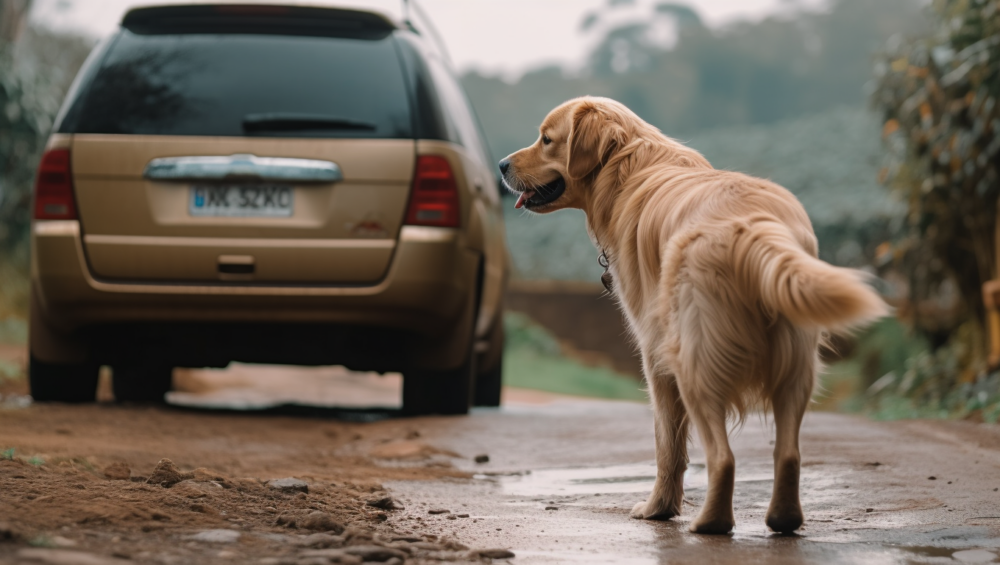
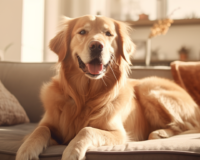
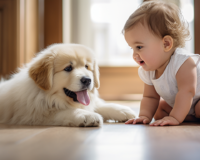

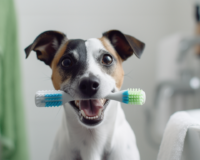
4 Comments
Is it okay to use calming supplements for my dog’s anxiety?
Calming supplements can be useful for some dogs. However, it’s important to consult your veterinarian before starting any new supplement to ensure it’s safe and appropriate for your dog’s specific health needs.
How long does it usually take for a dog to adjust to being alone?
The adjustment period can vary widely among dogs. Some may take a few weeks, while others might need a few months. Consistency and patience are key. Keep reinforcing positive alone time experiences, and slowly build up the duration.